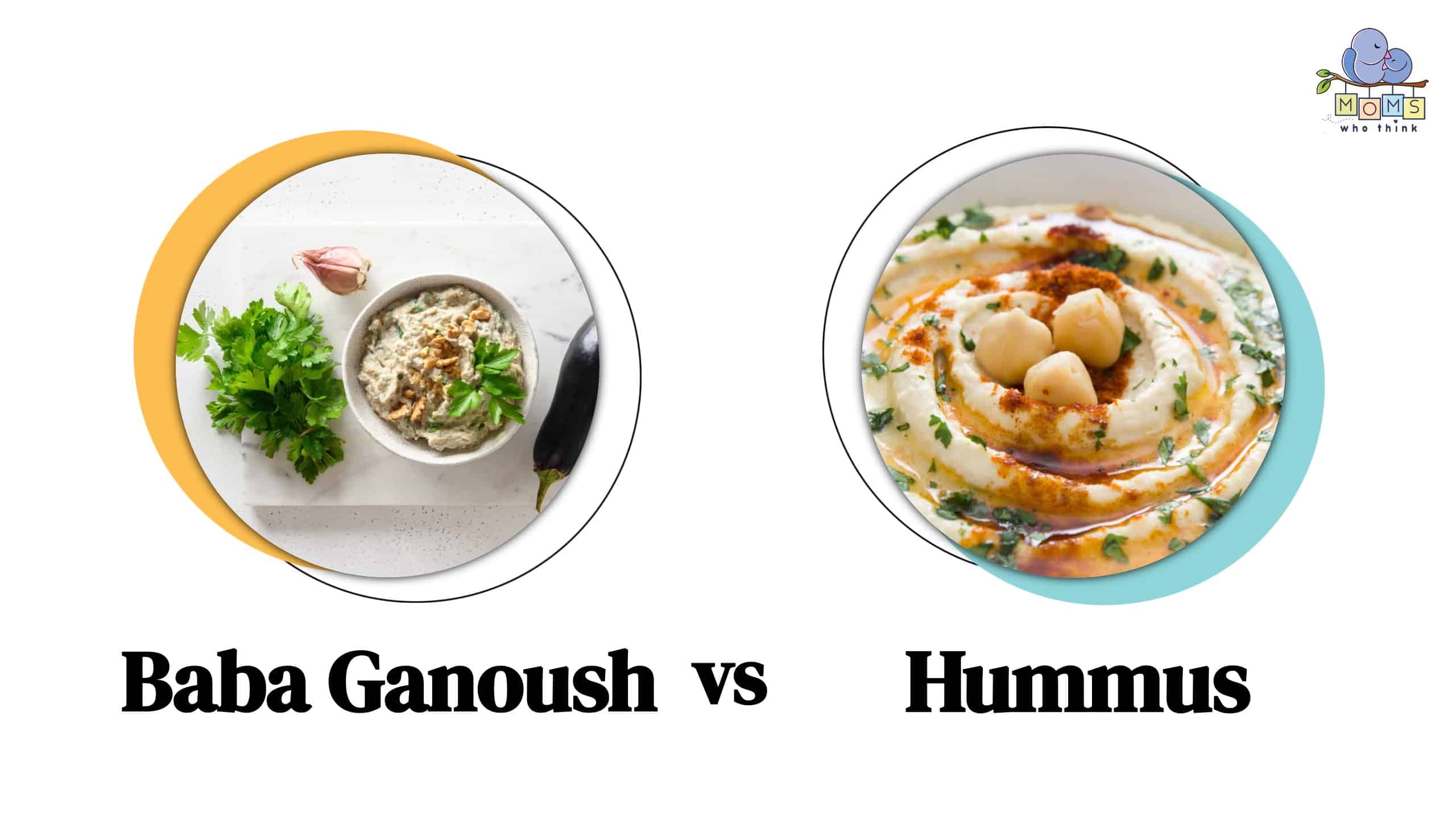Hummus and baba ganoush are two delicious dips that might seem similar at first glance, but there are some key differences between them. In this article, we will explore the origins, textures, flavors, and ingredients used to prepare baba ganoush and hummus and help you decide which dip is right for you.
- The must-have convenient reference guide for every home cook!
- Includes more than 8,000 substitutions for ingredients, cookware, and techniques.
- Save time and money on by avoiding trips to grab that "missing" ingredient you don't really need.
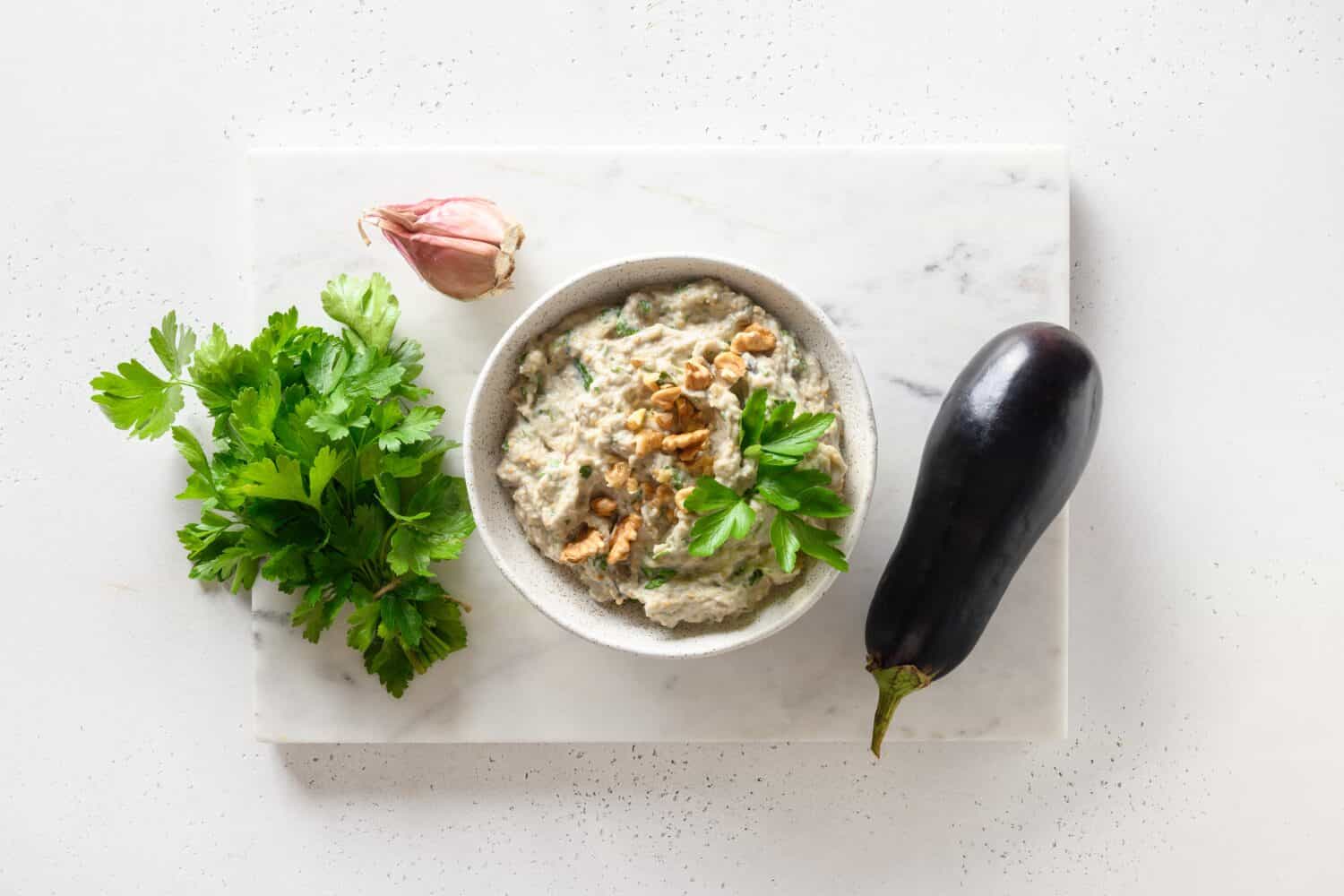
©Lazhko Svetlana/Shutterstock.com
Baba Ganoush vs. Hummus: What is the Difference?
The main difference between baba ganoush vs. hummus is that baba ganoush is made from roasted eggplant also known as brinjal, while hummus is made from chickpeas which are part of the legumes family. Because of these ingredient differences, baba ganoush has a smoky flavor that comes from roasting or grilling eggplant whereas hummus has a creamier texture and a slightly nutty flavor from chickpeas and tahini.
Finally, there are nutritional differences with hummus having higher protein while baba ganoush is usually lower in calories per serving.
Ingredient Differences
Baba ganoush and hummus are two of the most popular Middle Eastern dips in the world originating in Lebanon a country in Western Asia. These dips are delicious, healthy, and versatile. Baba ganoush dip is made with roasted eggplant mixed with tahini (sesame paste), olive oil, and various spices such as cumin and coriander. Hummus, on the other hand, is a dip made from chickpeas, tahini, lemon juice, olive oil, and garlic.
Where did Baba Ganoush and Hummus Originate?
It is said that baba ganoush originated in the Levant region (modern-day Syria, Lebanon, Israel, and Jordan) and has been a staple of Middle Eastern cuisine for centuries. The dish became popular in the United States when immigrants from the region brought it with them during the early 20th century.
Hummus is believed to have originated in Egypt, but it's also popular in other Middle Eastern countries. The earliest known recipe for hummus dates back to the 13th century. In recent years, hummus has gained popularity in the United States, Africa, and the Mediterranean as a healthy and flavourful snack.
Taste and Texture Differences between Baba Ganoush vs. Hummus
Baba ganoush has a slightly chunky texture and smoky flavor from the roasted eggplant with a nutty, rich taste from the tahini. It also has a slightly tangy taste from the lemon juice, which helps balance out the richness.
Hummus has a milder flavor with a creamy melt-in-your-mouth feeling. It's also more versatile in terms of flavor, as it can be easily customized with herbs, spices, olives, and feta for that extra saltiness.
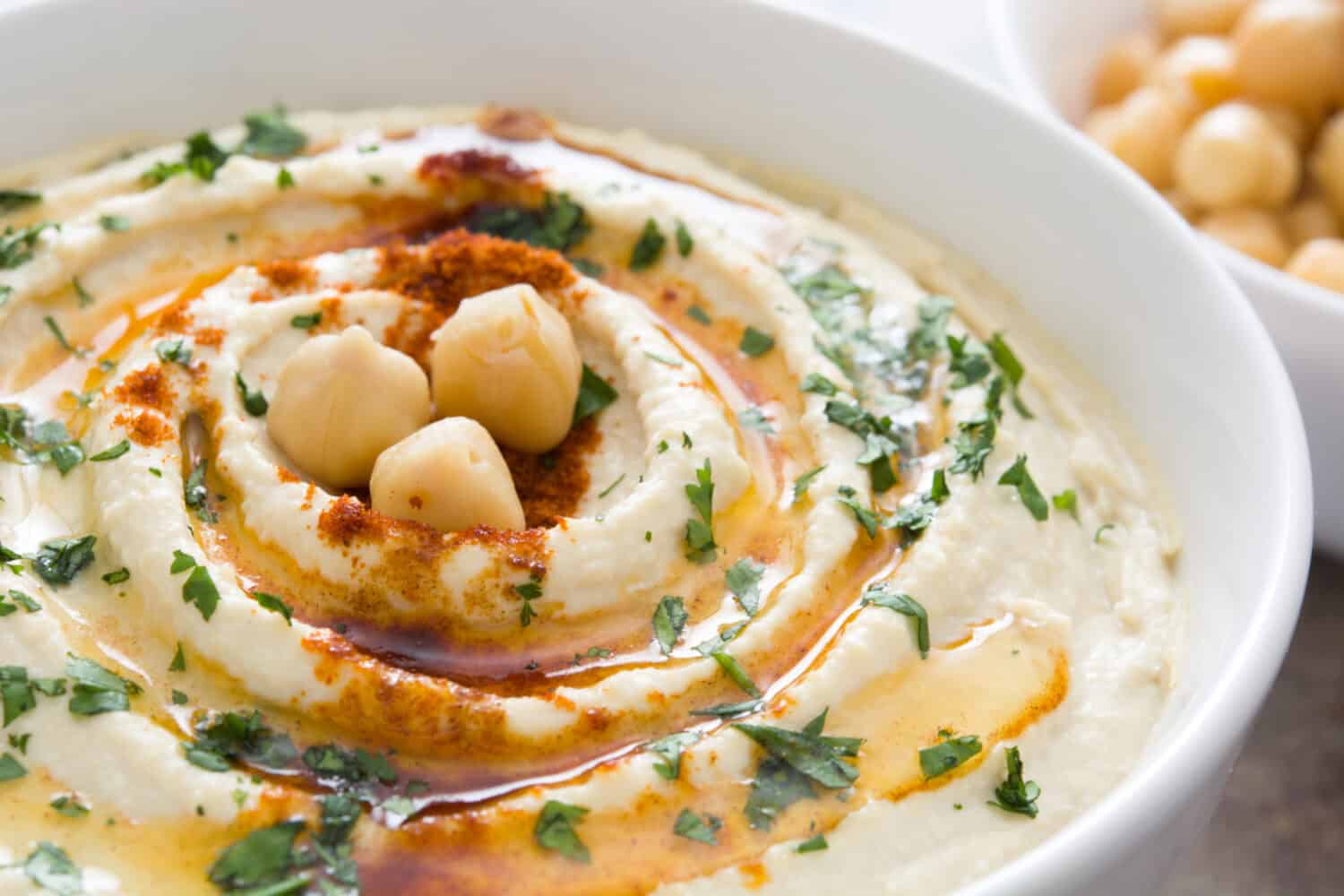
©etorres/Shutterstock.com
Nutritional Values of Baba Ganoush vs. Hummus: Calories, Fats, and Proteins Per Serving
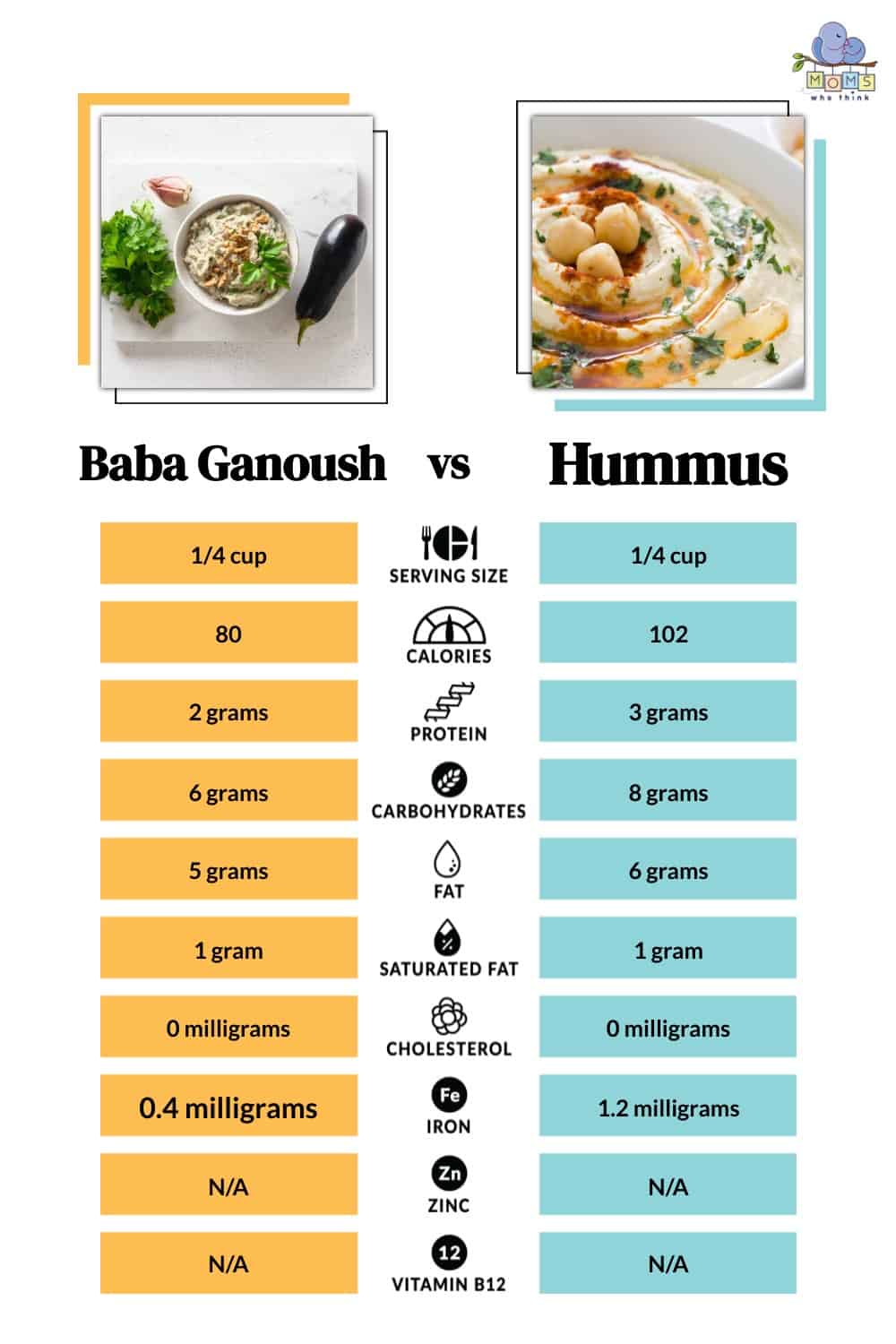
The main ingredient in baba ganoush is roasted eggplant, which gives it that smoky flavor. Other common ingredients include tahini, lemon juice, garlic, and olive oil. Baba ganoush is relatively low in calories and high in fiber, making it a healthy choice.
Hummus is made with chickpeas, which are high in protein and fiber. Other common ingredients include tahini, lemon juice, garlic, and olive oil. Hummus is also relatively low in calories and high in nutrients. However, it should be noted hummus generally has more total calories but higher levels of protein compared to baba ganoush.
Both dips are known for their creaminess, distinctive flavor, and texture. They can be enjoyed as a dip, spread on sandwiches, or used as a topping for meats and vegetables. They're also both vegetarian and vegan-friendly, making them a great choice for those with dietary restrictions.
- The must-have convenient reference guide for every home cook!
- Includes more than 8,000 substitutions for ingredients, cookware, and techniques.
- Save time and money on by avoiding trips to grab that "missing" ingredient you don't really need.
Health Benefits of Baba Ganoush
Baba ganoush is made with eggplant, which is rich in fiber, potassium, antioxidants, and flavonoids. It also contains tahini, which is a source of healthy fats and minerals. Eating baba ganoush may help reduce inflammation, lower blood pressure, and improve heart health.
Hummus is made with chickpeas, which are high in protein, fiber, and vitamins. It also contains tahini, which is a source of healthy fats and minerals. Eating hummus may help improve digestion, boost immunity, and lower the risk of chronic diseases.
Fun Facts – Did You Know?
- Eggplants are closely related to the tomato and potato family, even though they all belong to the deadly nightshade family, they are all safe to eat.
- Eggplants are actually classified as a fruit.
- Chickpeas can come in different colors such as black, red, brown, and green not only the light cream color we often see in cans.
- Chickpeas also carry natural nitrogen fixings within their roots making them a perfect soil enhancer.
Conclusion
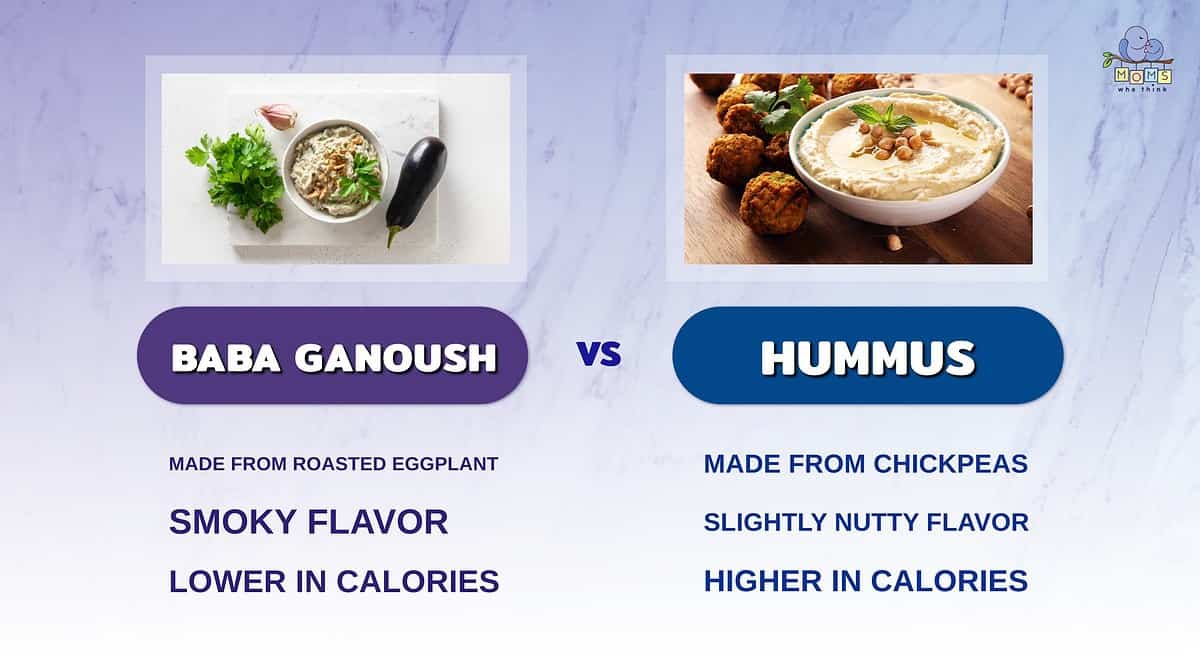
- One of the main differences between baba ganoush and hummus is the main ingredient used. Baba ganoush uses eggplant, while hummus is made from chickpeas. This difference is important to know if you or someone in your family is sensitive to eggplant.
- Baba ganoush has a smoky flavor, while hummus is slightly nutty in taste.
- Hummus is higher in calories than baba ganoush, making it a poorer choice for those on a diet.
In the end, choosing between baba ganoush and hummus comes down to your personal preference. Both dips are delicious, healthy, and versatile, and can be enjoyed in many different ways. Try experimenting with different recipes and variations to find your favorite! In conclusion, whether you prefer the smoky flavor and creamy texture of baba ganoush or the tangy, garlicky taste of hummus, both dips are delicious and nutritious additions to any meal. With their rich history and cultural significance, baba ganoush and hummus have become loved around the world. So why not try them both and decide for yourself which one you prefer?
FAQ
Is baba ganoush or hummus healthier?
Both dips have their own unique nutritional benefits. Baba ganoush is high in fiber and antioxidants, while hummus is high in protein and healthy fats. Ultimately, the healthiness of each dip depends on the ingredients used and how they are prepared.
What are some alternative ways to enjoy baba ganoush and hummus?
Both baba ganoush and hummus can be used as dips for pita bread, vegetables, or crackers. They can also be used as sandwich spreads or as a topping for salads. Baba ganoush pairs well with grilled meats and vegetables, while hummus is delicious with falafel, kebab, or shawarma.
Are there any possible allergens in baba ganoush or hummus?
Both dips contain sesame, which is a common allergen. Hummus also contains chickpeas, which can be a potential allergen for some people. If you have any food allergies, it's important to check the ingredients before eating baba ganoush or hummus.
How long can baba ganoush and hummus be stored?
Both dips can be stored in the refrigerator for up to a week. Make sure to keep them in airtight containers to prevent them from drying out. If you're not planning on using them within a week, you can freeze them for up to three months.
Tasty Recipes
Print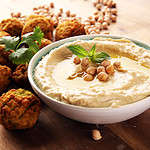
Red Pepper Hummus
Ingredients
2 (15 ounce) cans chickpeas, rinsed and drained
3 garlic cloves
1/2 cup jarred roasted red pepper, drained
1/2 cup tahini
1/4 cup water
2 Tablespoons olive oil
1 1/2 teaspoons salt
1/2 teaspoon ground cumin
1/4 teaspoon ground red pepper
1/3 cup fresh lime juice
Instructions
1. Blend all ingredients in a food processor until smooth, scraping sides often.
2. Cover and chill until ready to serve. Makes 3 1/2 cups.
